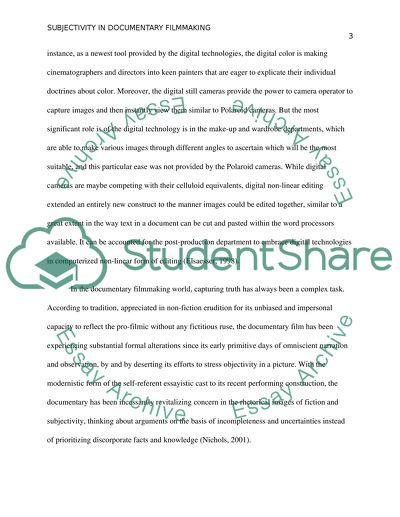Cite this document
(“What does subjectivity means in terms of documentary filmmaking and Research Paper”, n.d.)
What does subjectivity means in terms of documentary filmmaking and Research Paper. Retrieved from https://studentshare.org/visual-arts-film-studies/1478052-what-does-subjectivity-means-in-terms-of
What does subjectivity means in terms of documentary filmmaking and Research Paper. Retrieved from https://studentshare.org/visual-arts-film-studies/1478052-what-does-subjectivity-means-in-terms-of
(What Does Subjectivity Means in Terms of Documentary Filmmaking and Research Paper)
What Does Subjectivity Means in Terms of Documentary Filmmaking and Research Paper. https://studentshare.org/visual-arts-film-studies/1478052-what-does-subjectivity-means-in-terms-of.
What Does Subjectivity Means in Terms of Documentary Filmmaking and Research Paper. https://studentshare.org/visual-arts-film-studies/1478052-what-does-subjectivity-means-in-terms-of.
“What Does Subjectivity Means in Terms of Documentary Filmmaking and Research Paper”, n.d. https://studentshare.org/visual-arts-film-studies/1478052-what-does-subjectivity-means-in-terms-of.


